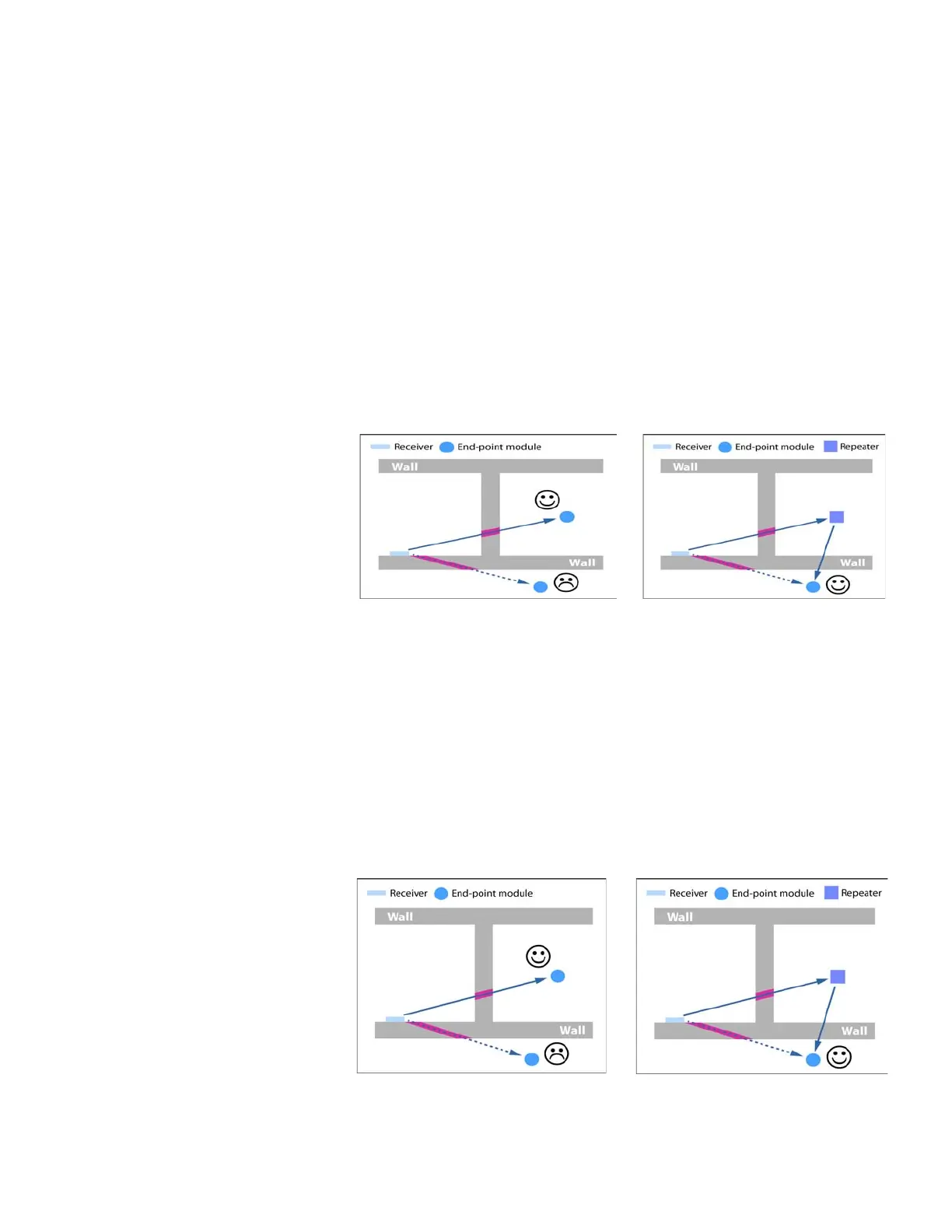Preventive Maintenance Guidelines
Thermo Scientific Smart-Vue
®
Wireless Monitoring Solution Administrator Guide v 2.2 121
• Module mounted on metal surfaces (typically 30% loss of range)
• Hollow, lightweight walls loosely filled with insulating wool on metal
foil
• Hanging ceilings with panels made of metal or carbon fiber
• Steel furniture, lead glass or glass with metal coating
• Raised flooring
• Air ventilation conduits, electric cable pass-throughs
Fire-safety walls and doors, elevator shafts, staircases and supply areas should
be considered as obstacles with a screening effect. Avoid this effect by
repositioning the receiver or module (see first image below) to avoid the
radio shadow; or by using a repeater (second image below).
Figure 66. Place devices for best wireless performance by placing them
appropriately
Angle of penetration
The angle at which the transmitted signal penetrates the wall is very
important. The effective wall thickness – thus the signal attenuation – varies
according to the angle of penetration (first image below). Signals should be
transmitted as directly as possible through walls. Wall niches should be
avoided. Avoid an undesirable angle of penetration by repositioning the
receiver or by using a repeater (second image below).
Figure 67. Avoid signal attenuation due to angle of penetration
